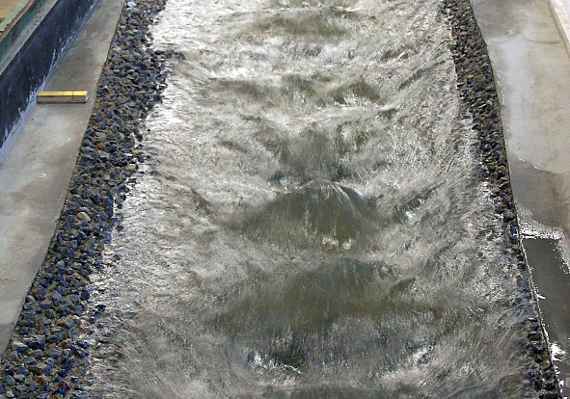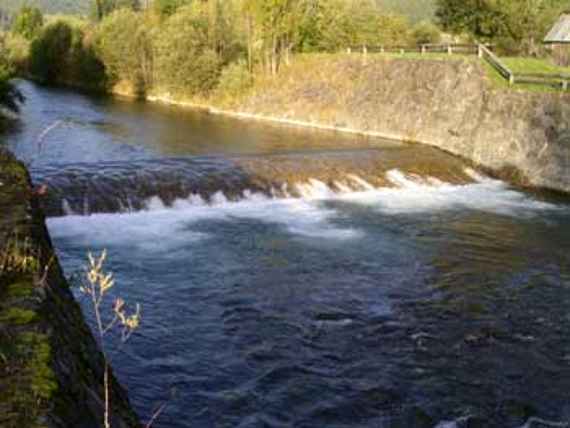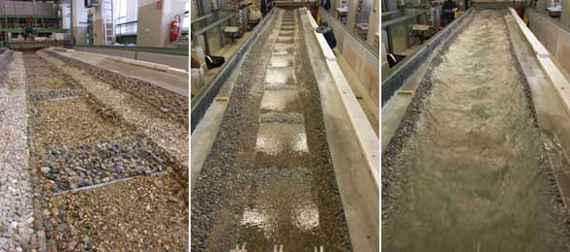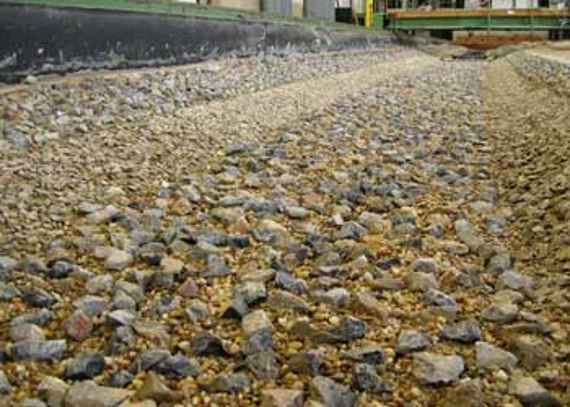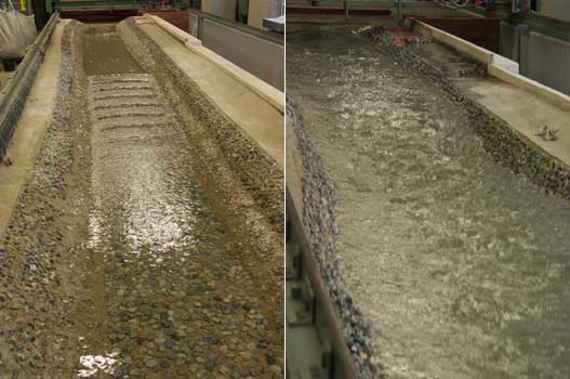The Gail in the Kötschach-Mauthen in Carinthia area shows a hard-regulated channel with a uniform bed width. Several smaller riverbed steps exist to support the riverbed. In the course of the examination of the flood protection of Kötschach-Mauthen a deficit was found, which has to be compensated.
In the course of improving the flow capacity of the river, mainly by widening the channel, the second main objective, in addition to ensuring adequate flood protection, was to improve the channel from an ecological point of view, whereby the existing riverbed steps were to be removed at the same time. The bed slope of the watercourse section will increase from currently 0.8 to 1 %.
Bed sill on the Gail near Kötschach-Mauthen.
In order to meet the requirements of flood safety on the one hand and those of ecology on the other hand, DonauConsult has proposed various solutions for river bed stabilization for the river section in question, which are being investigated by means of physical model tests. The model test is intended to provide the basis for a comparison of hydraulic engineering feasible, ecologically justifiable and economically efficient construction methods under different operating conditions. The aim of the trial is to develop reliable design aids for flood protection on the Gail in the Kötschach-Mauthen area and thus to obtain the best technical, ecological and economic solution.
The solution approaches to be investigated include an analysis of the existing situation and following variants:
- bed sills
- open armour layer
- structured ramp
All three investigated approaches to bed stabilization proved their feasibility after optimization.
In the case of the bed protection by means of cross sills, the stabilization was achieved by installing fixed cross sills made of quarry stones at regular intervals of 40 m. The sill width was chosen to 10 m, resulting in a clear distance between the cross sills of 30 m. From the tests with little or no bed load inflow, scour depths of up to 2.5 m between the cross sills were found, which on the one hand required separate securing of sill head and sill end and on the other hand a wavy outflow with wave heights of up to 4 m showed. It can be assumed, however, that bed load operation normally prevails in which no such large scour depths are formed and therefore the wave forms with less pronounced maxima also occur.
Picture left: solution with bed sills and dry bed;
Picture in the middle: bed sill solution at low flow;
Right picture: bed sill solution at a flood (HQ100)
Open armour layers are riverbed coverings with larger stones in an open arrangement, so that a large part of the riverbed remains free between the individual stones. The spaces between the stones ensure the vertical and horizontal permeability of the riverbed and a variety of flow patterns in the current shadows of the stones result in shelters for fish and a reduced risk of colmation. The open armour layer was applied to the entire riverbed with a 35 % coverage density and proved to be stable in all tests, both with and without bed load addition. In tests with bed load addition, the open armour layer was covered by a bed load layer.
Open armour layer with 35 % coverage density
The structured ramp consisted of ten concave curved individual cross bars, each of which was composed of three rows of stones. Between the bars the basins were covered with stones which closed the ramp area and which was intended to prevent the ramp from erosion and thus the cross bars from failing. The ramp was inclined 1 to 25, the distance between the cross bars was 10 m, resulting in a height difference of 0.40 m between the individual bars. This should ensure fish passability and thus improve the ecological continuity of the watercourse. The structured ramp survived all clean water tests up to the design discharge as well as tests with bed load supply without damage.
left picture: structured ramp at low water
right picture: structured ramp at the design discharge
In order to give the river more structural diversity again in the Kötschach-Mauthen area, a combined solution of open armour layer and structured ramp is planned.
The model test was carried out in cooperation between the DonauConsult office and the Institute for Hydraulic Engineering and Calibration of Hydrometrical Current-Meters of the Federal Office for Water Management.
The following 3 photos show the finished flood protection in June 2018 with a discharge of 6.2 cubic meters per second (the average discharge is approximate 10 cubic meters per second):
-
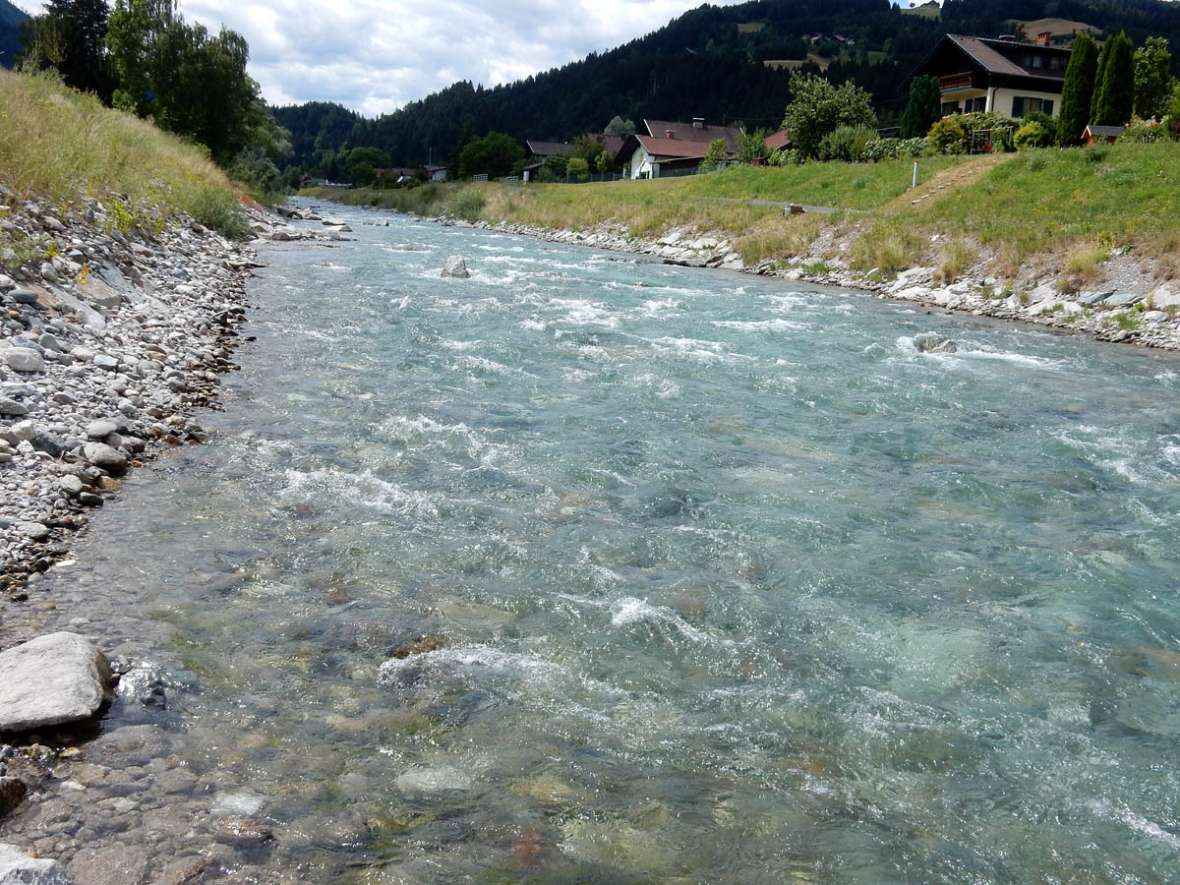
© BAW-IWB zoom gallery -
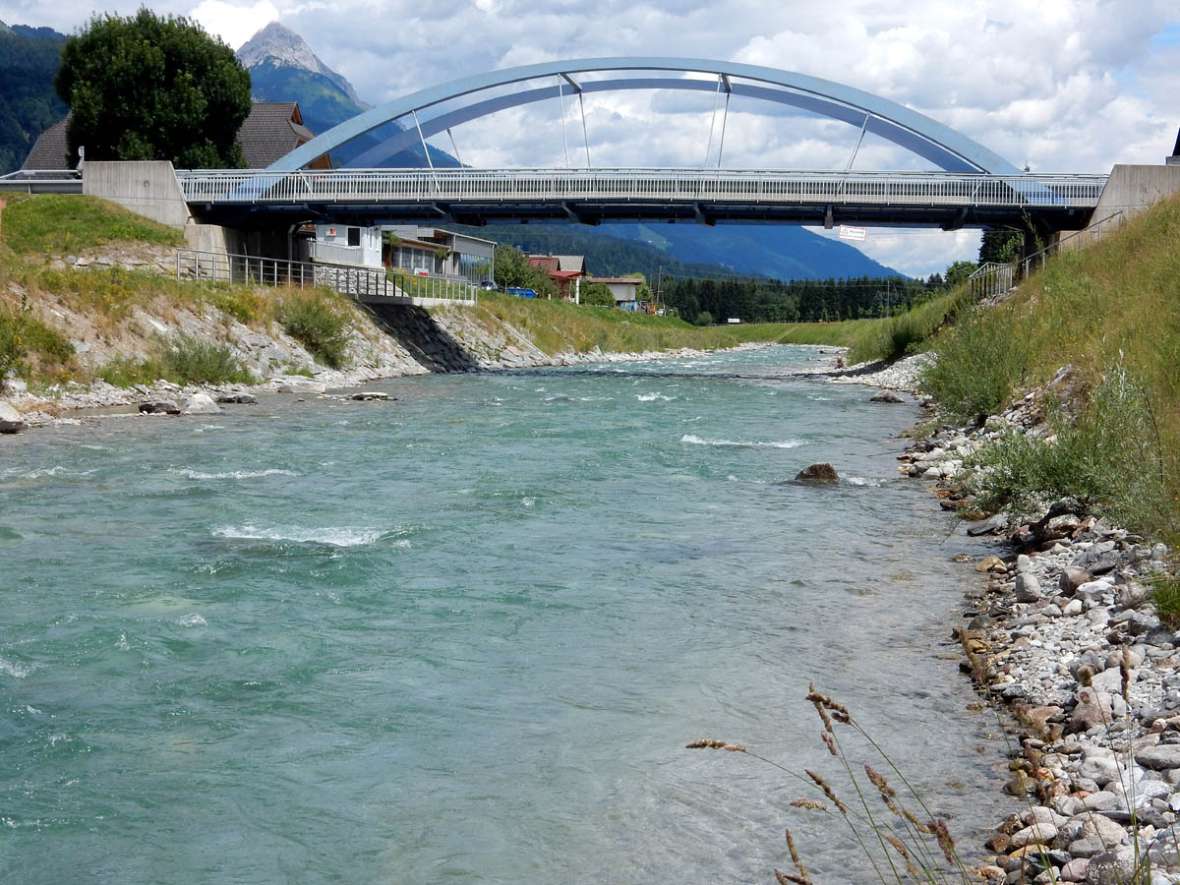
© BAW-IWB zoom gallery -
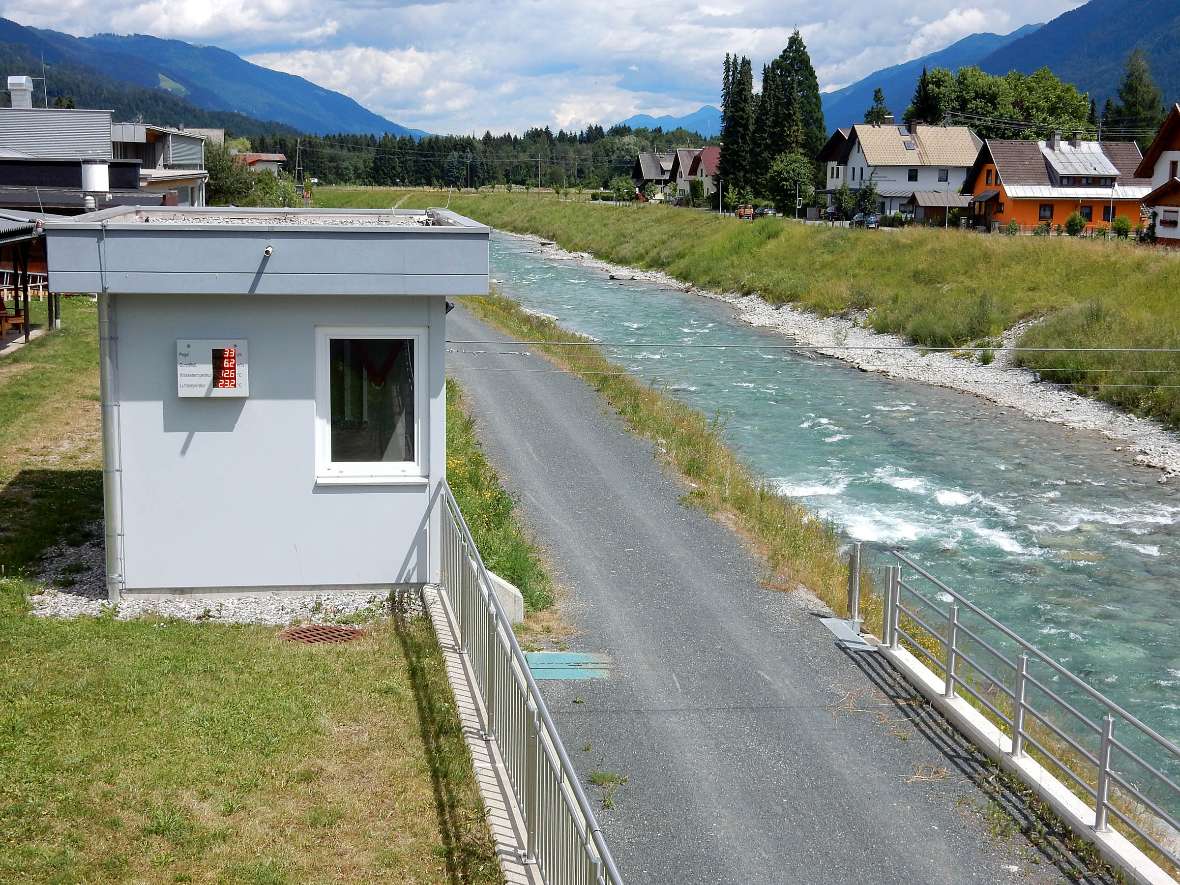
© BAW-IWB zoom gallery
The implementation of the measures was completed in autumn 2017. Only 1 year later, in November 2018, a flood occurred which, with a peak discharge of 506 cubic meters per second (Flood Drau Möll and Gail Hydrological Final Report_19032019 of the Hydrography of the Province of Carinthia – in German) was only slightly below the design discharge of 600 cubic meters per second. The protection measures survived this flood without damage.

